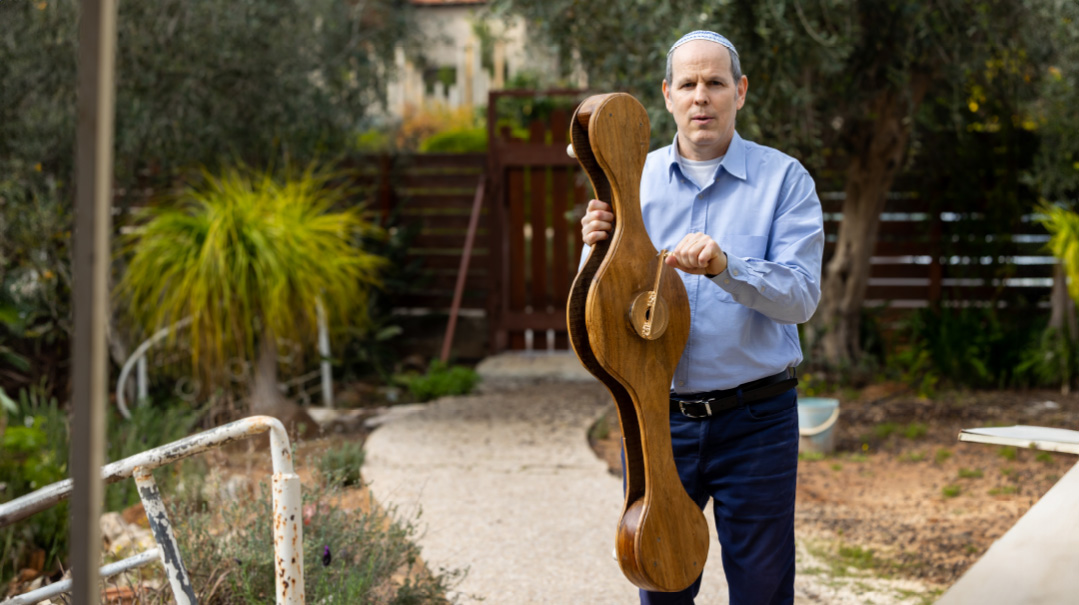Out to Lunch
| February 14, 2023They’re a community of mushroom hunters, who know how to find some of nature’s richest food in venues you’d never expect
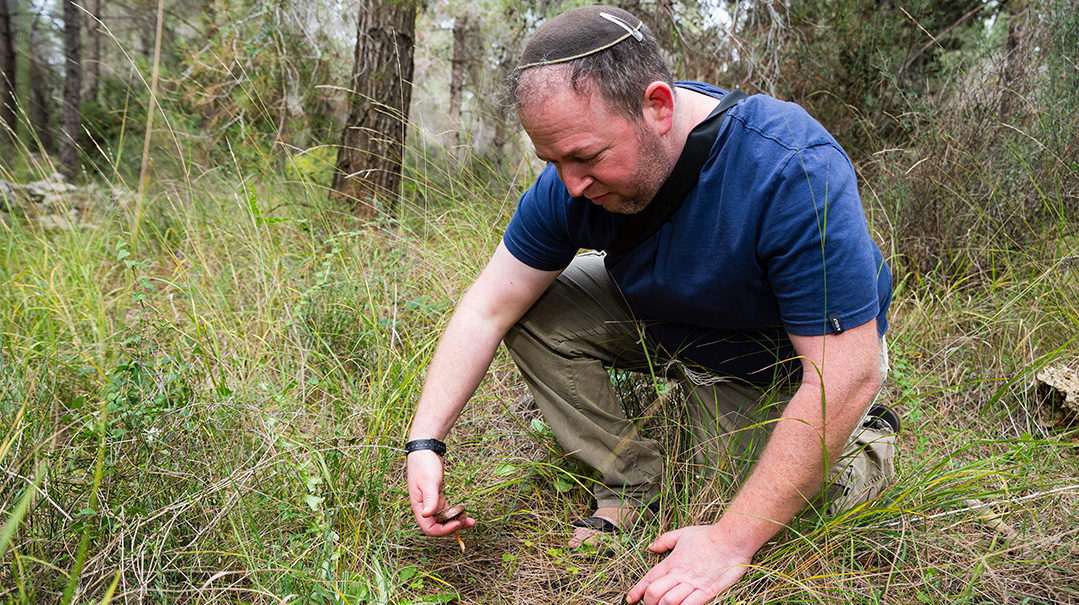
Photos: Elchanan Kotler
They live in the city and work in a variety of professions, but after the rains, you can find them under a canopy of trees, digging under the brush — foraging for a meal in the woods. They’re a community of mushroom hunters, who know how to find some of nature’s richest food in venues you’d never expect, giving new meaning to going out to eat
IT might not have been the Amazon Rain Forest or Redwood National Park, but Park Begin, south of Jerusalem on the outskirts of Beitar, was just fine for our purposes. We decided to join up with Tal Shaul, a computer programmer from the Bnei Brak suburb of Givat Shmuel, who never misses an opportunity to head for the woods after a good week of rain. By day’s end, Tal will have filled a box with an assortment of mushrooms for dinner, although he’s no desperate pauper who can’t afford groceries. But he is a nature lover, and nothing makes him happier than pulling up logs and peeking through underbrush in search of this wonder-food that actually grows in abundance all over Eretz Yisrael.
Mushrooms are one of nature’s most intriguing and mysterious foods. They look like they grow in the ground, but the “plant” you see is actually just the tip of a massive network of underground fungi, nurtured by a combination of air and decomposed matter. That’s why the brachah is shehakol, and there is no obligation (in Eretz Yisrael) of terumos and maasros.
While Israel might be classified as a desert nation, it’s blessed with many forests and wooded areas pulsing with life.
“People think of foragers as hippies living in tents and eating weeds,” says Tal, 36, who has been part of the mushroom foraging community for the last seven years, “but that’s very far from the truth. Israel is a small country without too many natural spaces that aren’t being built up, and although most people live in crowded cities, Israelis love the outdoors — they’ll make a picnic on any patch of grass they find — so this is a really good opportunity to get back to nature, and it doesn’t have to be a huge place. It can even be a park.
“Lots of people ask me about my strange hobby,” Tal continues, qualifying that he also tracks plants, birds, and even snakes. “But after you find, harvest, and taste the mushrooms picked straight from the ground, you might never go back to eating canned mushrooms again.”
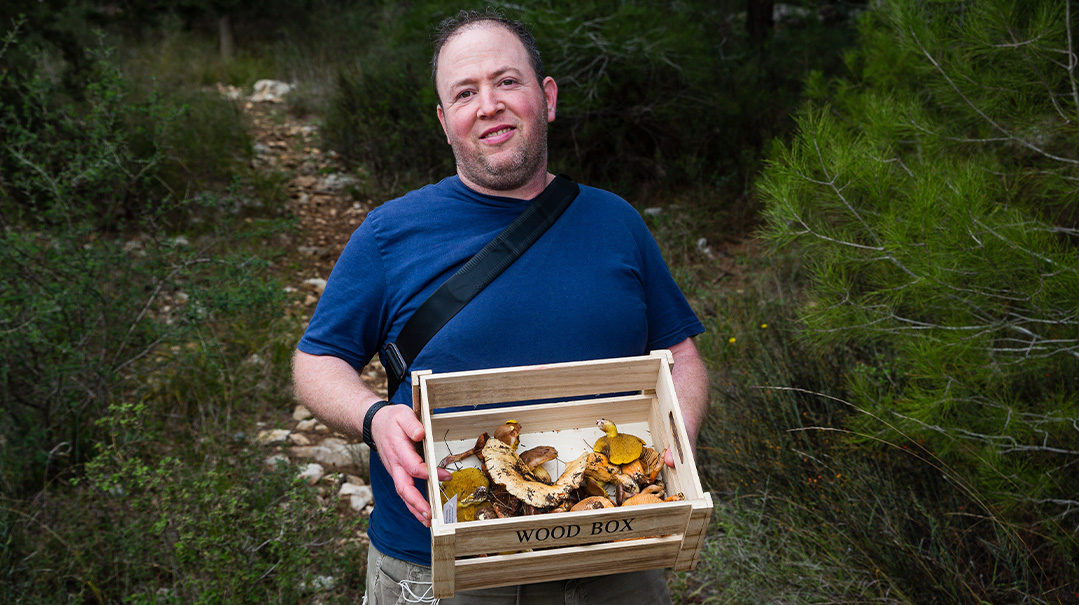
Meet the Blessings
As we follow Tal into Park Begin, we realize he isn’t so eccentric after all. There’s a whole community of people who choose to “go out to eat” — not in a restaurant, but in the heart of nature. And the best thing is that the gourmet delicacies here are free. These mushroom foragers are known as mycophiles, although most people just call them “mushroom hunters.”
In Israel, most of them belong to the Israel Mushroom Collectors group, where Tal is one of the few religious members and considered the “mashgiach” because of his practical knowledge regarding the very real kashrus issue of infestation. Many of his colleagues are immigrants from the former Soviet Union.
“We often went to the forest to pick mushrooms,” one middle-aged Russian-born woman explains. “When we came to Israel, we found that the Israelis are not so familiar with the natural abundance in the woods, which is so readily available for the taking. But with time, more and more Israelis are being introduced to this blessing.”
In Ukraine, mushroom hunting is part of the culture. Children would go into the forests and come back loaded with their finds, while their mothers developed an expansive array of recipes, including fried, pickled, and preserved mushrooms. It’s no wonder that today as well, with Ukraine a bloody war zone as Putin and Zelensky duke it out, Ukrainians collecting mushrooms in smoky, burnt-out settings have become familiar scenes.
Tal says that although many associate mushroom foraging with Russian and Eastern European immigrants, there’s a sizeable local market as well. “While the Russians like to focus on a certain type of mushroom, the Druze in the Galil have their favorite species, and the Bedouin in the south are experts at finding truffles, the world’s most expensive yet elusive mushroom,” he says.
Desert truffles, which can sell for up to $4,000 per pound, are considered by top chefs to be one of the most exquisite foods on the planet, but where exactly they grow is a mystery. As a fungus, as are all mushrooms, they grow underground near certain host tree and shrub roots, and to find them, most truffle hunters use trained dogs and pigs to sniff them out.
In Israel, the only ones who’ve been successful at finding desert truffles are local Bedouin tribes, who gather them while they’re herding, although Israeli researchers are now looking for their own way to grow and cultivate this “desert gold.”
And in a true only-in-Israel moment, a boy who went foraging for mushrooms following recent rains even found an ancient archaeological artifact that was unearthed after the downpour. The 13-year-old noticed a stone slab with a Greek inscription protruding out of the ground, which turned out to be Byzantine gravestone. He might not have found too many mushrooms that day, but he did get an award from the Israel Antiquities Authority.
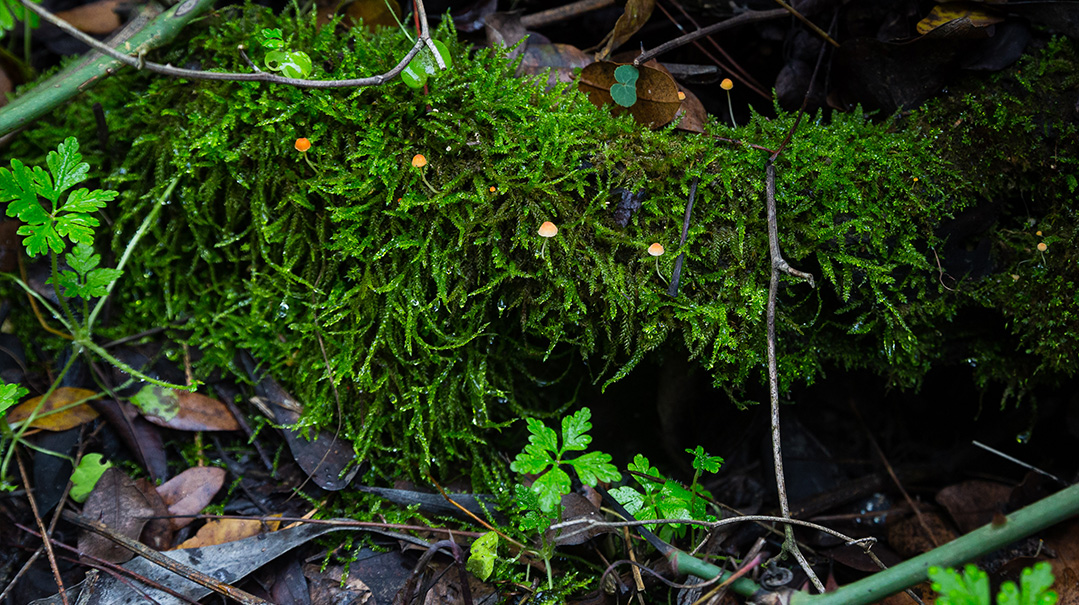
Play by the Rules
According to Tal, pine, oak and other trees serve as a kind of greenhouse environment for mushrooms, many of them hidden under a blanket of damp needles covering the forest floor.
As we pull away the foliage, the mushrooms seem to magically emerge. We’ve learned to identify the weeping bolete, saffron milk cap, and red pine mushroom; they are scattered aplenty around the area. The further in we go, the more we see evidence of mushrooms that have already been plucked, indicating that other mushroom aficionados have already been here.
“All the mushroom harvesters know that a lot of varieties of mushrooms grow here,” Tal explains, “and the picking is free, as opposed to in nature reserves, where you can be slapped with a hefty fine if you’re caught.”
In general, these foragers are quite scrupulous about adhering to the rules. In fact, mushroom pickers are careful to stuff the hole that was made in the ground, in order for the mycelium, or the roots of the mushroom, to continue to develop below ground. Some even cut the foot off the mushroom and put it back in the ground, although Tal points out that this is unnecessary.
“The body of the mushroom,” he explains, “is not actually what we see at the top, the mushroom itself, but rather the mycelium — the underground network of fungal threads below the surface. The mushroom is really the generator of nature’s recycling. It breaks down the remnants of organic matter, so that it will return to the ground as a nutrient for plants. That is why we’ll see mushrooms digesting tree stumps. It’s advisable to cover the hole in the ground with a layer of dirt after extracting the mushroom, and then on top of that to place a layer of leaves or grass. This way, we let the mushroom continue doing its job, even after we pluck it.
“But as much as we know, research points to the fact that the more we learn about the mushroom, the more we discover that there’s so much we don’t know,” he says. “We do know that they proliferate near trees, and that they contribute to the growth of the trees. That’s why even as we harvest mushrooms, we still need to make sure the underground network is still doing its job.”
On the other hand, Tal says it’s not necessary to collect mushrooms in a basket with holes — a common custom — so the spores can drop, scatter, and create new life. His own box has no holes.
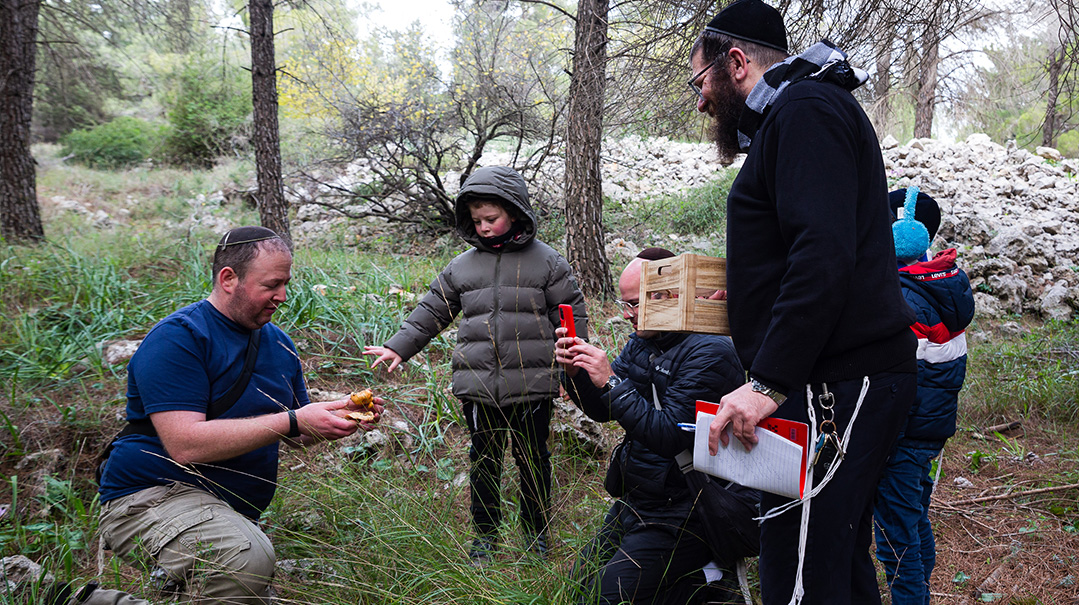
Proceed with Caution
We’ve all heard of poison mushrooms, those innocuous fungus flowers that sometimes look pretty much like the fresh mushrooms we’re sure are edible. And even before we set out, Tal warned us, “Never even touch a mushroom that you’re not familiar with. There are a lot of dangerous and poisonous mushrooms out there.”
The most common of them is called the “death cap,” which can lead to liver damage, organ failure, and death. A few months back, two Chinese tourists were hospitalized after ingesting the poison mushroom, one of them on a ventilator in an induced coma with severe organ trauma.
Pine mushrooms, chanterelles, morels, oyster mushrooms, puffballs and polypores are among the most popular types of mushrooms to gather, most of these being fairly simple to properly identify by anyone with practice. But much more education and experience is required to make a positive identification of many other species, which often look similar.
Two mushrooms that appear very similar to one another are the chanterelle, which can be eaten, and the jack-o-lantern mushroom, which is toxic. Even our edible saffron milk caps are quite similar to the poisonous ringed milk cap.
That’s why, at least in the beginning, it’s important to go mushroom picking only with a certified guide who knows which species are edible.
“It’s always best to go mushroom hunting with others who are more experienced,” says Tal. “You can always join a group. In Israel the association members are quite knowledgeable. But if you’re in doubt, you should take a picture — including the stem, cap, gills, and place of growth — and send it to experts before putting it in your mouth or even touching it.”
And yet, he says, pictures alone aren’t 100 percent reliable either because they’re still only two-dimensional, even if the identification is made by a professional mycologist, or fungus expert.
The Jewish National Fund even published a special warning during Covid, when, due to lockdowns and isolation, people began to hike in the forests and to collect mushrooms. During that time there were numerous hospitalizations following the consumption of poisonous mushrooms.
Some people will post their pictures on the group, but members generally prefer to defer their opinion to a professional guide. Someone recently posted a photo of a questionable mushroom and asked whether he could eat it.
“Well, for sure at least once,” one member replied. “Please ask a guide.”
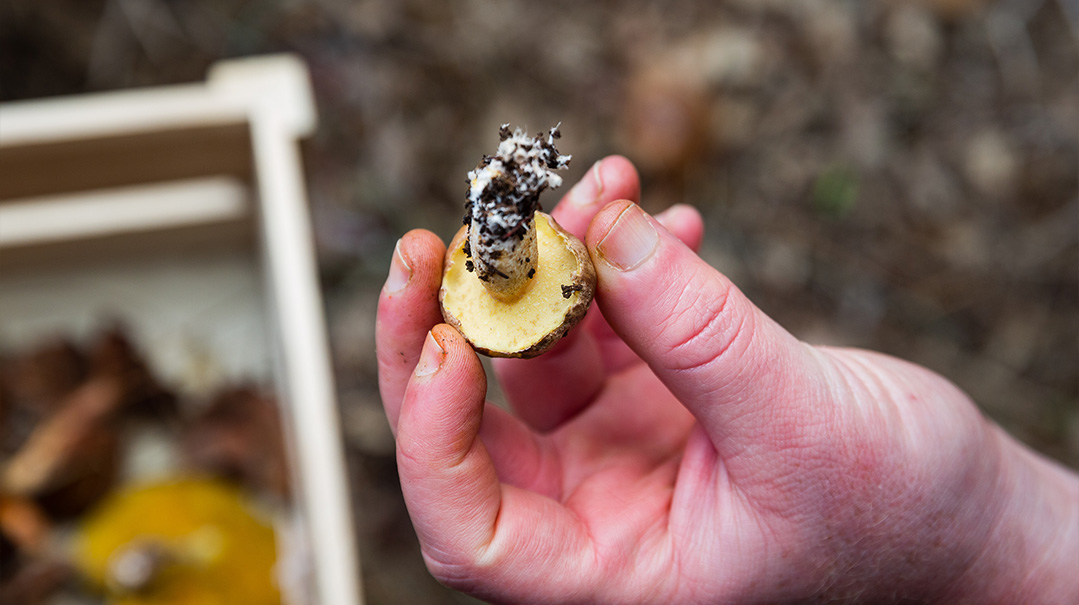
Clean Cuts
Given his professional responsibilities, how often does Tal actually find the time to go out to the forests and parks?
“Well, I work, so I’m not so flexible,” he says, “and also, the season is pretty short. In Israel, it’s generally from the rainy season in October, November, or even December, when the first rains hit, until the end of February. But mushrooms don’t like the cold, so it’s a good idea to wait a few days after the rains until it starts to warm up.”
If it gets too warm, though, the forest animals come out and eat them instead. So who wants to eat a mushroom that you think has been licked, or worse, by forest creatures?
“That’s why we always suggest to do some kind of cooking or heat treatment with the mushrooms to get rid of the germs, and although some people like eating them straight from the ground, it’s not suggested — for both health and kashrus reasons.”
Wild mushrooms are problematic from a kashrus perspective because they tend to be infested by maggots that develop at the base, or by other tiny creatures that attach to the cap. Tal shows us such a mushroom, and points out the littler critters, called springtails or collembola. One mushroom he shows us looks innocent and appetizing, but after a closer look, we see that it’s teeming with life. In fact, both the CRC and the Star K websites list various types of mushrooms, some of which can be eaten with a cursory checking, some that require a more thorough examination, and others that are not recommended altogether.
One can generally tell if a mushroom is infested with maggots by looking at the stem. If it’s infested, the stem will be hollow. But even if the stem is whole, maggots can hide between the gills under the cap. Therefore, in contrast to commercial mushrooms, which may be eaten with the gills, if you’re eating wild mushrooms, you might want to stick with the stems and either forgo the caps or cut away the gills, which means leaving little “meat” to eat.
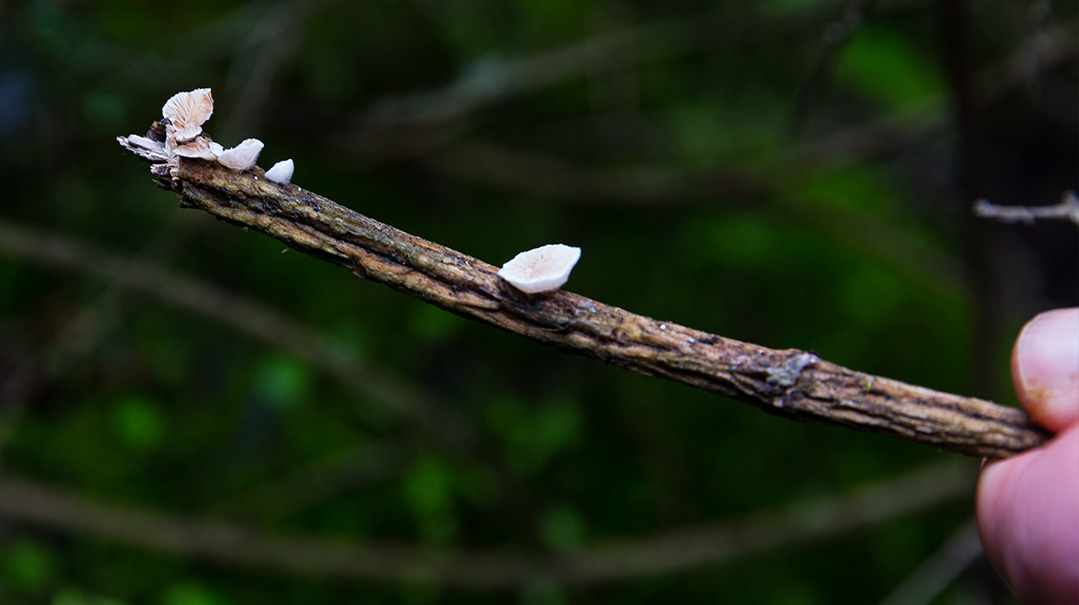
What’s On Your Plate?
“I can’t say every excursion is a great adventure,” Tal admits. “Sometimes you come to a forest and there’s nothing. Sometimes you fill your entire basket in ten minutes and then the tiyul is over. Sometimes you find mushrooms whose flavor you don’t like, and you have to decide if you really want to take them home.”
And once, he lost his bearings in a forest, and until he figured out where the exit was, he met up with a few wild animals.
But if you’re a mushroom afficionado, you don’t even need to take a trip to a forest. Tal says you can even find mushrooms in the city after a good rain.
“You’d be surprised, but you don’t have to go out into nature to come across mushrooms,” he says. “In the city, surprisingly enough, there are many kinds of mushrooms that usually grow after rains near the trees. You just have to know where to look. In Jerusalem, check out Rechov Hanasi, look in the carob trees, and you’ll find hundreds of mushrooms. But I don’t recommend eating them because they grow alongside a very busy street and they absorb soot and exhaust from the cars.”
We’re not on Rechov Hanasi, though. We’re still wending our way through Park Begin, where we come to a winding channel that just a few days earlier was blessed with rains and is now flowering abundantly. Even the smooth rocks are enveloped in green. And there, wherever we look, Tal finds mushrooms.
He shows them to us in masses, big ones, small ones, growing everywhere, even in pieces of rotting wood, from which new life sprouts in the form of small but pretty and colorful mushrooms. Others grow on the sides of the rocks, and then there are the miniature mycena mushrooms, which look more like thin sprouts, and which we would have missed had Tal not pointed them out. Some are no bigger than a strand of hair.
Tal has a big harvest today. But how much of that is actually going to get onto his plate?
“Not sure yet,” he says. “First I’ll take them home, clean them, and check for infestation. They can last for around three days in the fridge, but I’ll tell you the truth: You really have to like the taste. Even if they’re clean and edible, not all mushrooms always taste good, at least to me. Yet often when I go out, it’s not just to pick mushrooms to eat. The search is its own adventure.”
Rachel Ginsberg contributed to this report.
(Originally featured in Mishpacha, Issue 949)
Oops! We could not locate your form.



